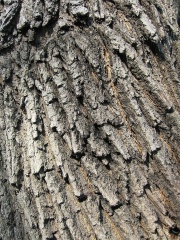Difference between revisions of "Maple bark"
Jump to navigation
Jump to search
(username removed) |
m (Text replace - "== Authority ==" to "== Sources Checked for Data in Record ==") |
||
| Line 10: | Line 10: | ||
Norway maple trees (''Acer platanoides''); silver maple (''Acer saccharinum)''; écorce d'érable (Fr.); | Norway maple trees (''Acer platanoides''); silver maple (''Acer saccharinum)''; écorce d'érable (Fr.); | ||
| − | == | + | == Sources Checked for Data in Record == |
* R.J. Adrosko, ''Natural Dyes in the United States'', Smithsonian Institution Press, Washington, DC, 1968 | * R.J. Adrosko, ''Natural Dyes in the United States'', Smithsonian Institution Press, Washington, DC, 1968 | ||
Revision as of 06:54, 1 May 2016
Description
Bark from Norway maple trees (Acer platanoides) and silver maple (Acer saccharinum). Red maple bark gives a pale gray (cotton) to rose-tan (wool) color using an alum mordant. Changing mordants to copper sulfate produces a dark gray while chrome produces and beige color. Silver maple bark gives a tan color with alum and a black with copper. The drab colors from the maple bark dyes have good color fastness.
Synonyms and Related Terms
Norway maple trees (Acer platanoides); silver maple (Acer saccharinum); écorce d'érable (Fr.);
Sources Checked for Data in Record
- R.J. Adrosko, Natural Dyes in the United States, Smithsonian Institution Press, Washington, DC, 1968
- John and Margaret Cannon, Dye Plants and Dyeing, Herbert Press, London, 1994
- The American Heritage Dictionary or Encarta, via Microsoft Bookshelf 98, Microsoft Corp., 1998
